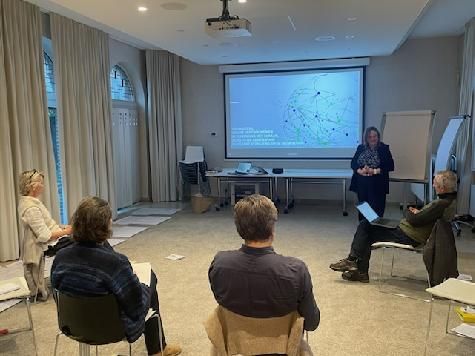
Will AI take over our jobs to address the “war for talent,” or will it stimulate unemployment? Perhaps this needs to be nuanced. With Chat GPT, we are embarking on a new path of providing tools at a user-friendly level. How can this be integrated into the facility management field? Let’s take a closer look […]
Will AI take over our jobs to address the “war for talent,” or will it stimulate unemployment? Perhaps this needs to be nuanced. With Chat GPT, we are embarking on a new path of providing tools at a user-friendly level. How can this be integrated into the facility management field? Let’s take a closer look at some aspects.
With IFMA Belgium Chapter, we had Mieke De Ketelaere as a keynote speaker 1.5 years ago. She is an expert in AI and has also written a book called “Wanted: Human-AI translators.” It is clear in the book that AI is on the rise and that we will not be able to avoid it in many applications in the future. However, the current level of AI can be described as that of a “toddler” in human life. So there is still a long way to go. You can consult a whitepaper on this topic, which was created based on breakfast sessions with facility professionals: “Key Learnings: the impact of AI in the workplace – IFMA Belgium Chapter“
Now, let’s go back to the question of how AI and an application like Chat GPT can specifically help us. First, let’s frame what AI is. It refers to computer systems that learn, make decisions, and execute them independently. Chat GPT is an AI-powered chatbot developed by the company OpenAI in the USA.

In the short term, I see AI being further integrated into the following facility management domains:
Data is king! Believers in digital twin, smart buildings, and IoT will rejoice. With the help of AI and smart algorithms, entire facility processes can be automated from A to Z. This saves a lot of time in planning and follow-up. For example, if the temperature in a meeting room goes above 23°C, an alarm can be generated, and a work order can be created immediately. Since this is for a building in Antwerp, the IWMS (Integrated Workplace Management System) knows which service provider should be assigned. The technician receives the work order on their smartphone and can start working on it. This can be taken further by integrating BMS (Building Management Systems) with IWMS, but AI is needed to make “smart” decisions based on data and initiate the right processes.
Everyone is struggling to get their employees back to the workplace. We can do this by enhancing the employee experience. This has already been widely used in B2C applications. Think of Netflix recommending series based on your preferences and previously watched shows. If we extend this AI application to the workplace, imagine how much easier it would be. You open the app, and you immediately receive some suggestions. “Hey Tom, how are you? Are you coming to the office? Well, then we recommend the workspace on the 3rd floor, western wing. I see that you want to reserve it for the whole day. Can I pre-order the chicken poke bowl for you at the company restaurant?” Some people will like this, while others may not. If it is based on your previous experiences and collected data, it could enhance the employee experience (Note: Let’s leave the GDPR discussion aside for now 😉).
The central hub of the facility organization, the beating heart. As mentioned earlier, processes can be automated, including the entire CAFM (Complaints, Requests, Information, Faults) system, where AI can be applied. This once again improves efficiency in planning service tickets. And why not introduce a smart chatbot that colleagues can rely on? Through data, the chatbot becomes smarter and can provide better answers related to building specificity and linked to facility services. This ties back to the previous domain of improving the customer experience.
There has long been a shortage of skilled technical profiles and operational personnel for soft services. Not everyone has the same knowledge and experience, so how can we support and impart knowledge through technology? In a first-line approach, a knowledge bank could be used with AI applied to it, making it smarter with the questions technicians ask, for example. By providing “virtual reality” glasses and connecting them to the digital twin (BIM) concept, we can even use AR (augmented reality) to allow individuals to see information directly on the work floor and know what actions they need to take. Of course, it all starts with training, certifications, and competencies, but this can further support the deployment of multidisciplinary teams.
We still have a long way to go. The question is no longer whether the technology exists but how we can effectively leverage it. My advice: Just start!


